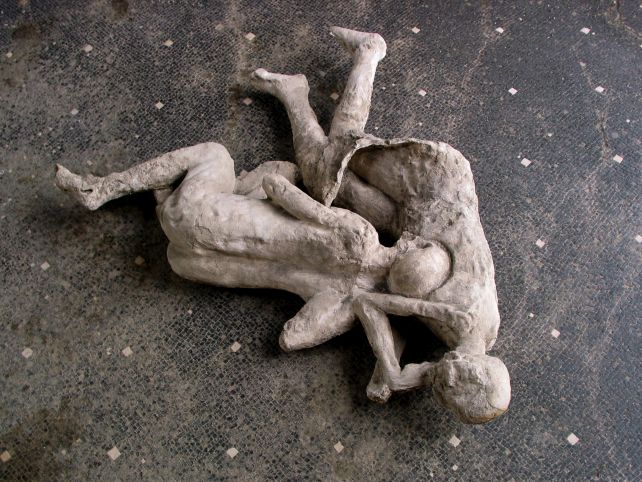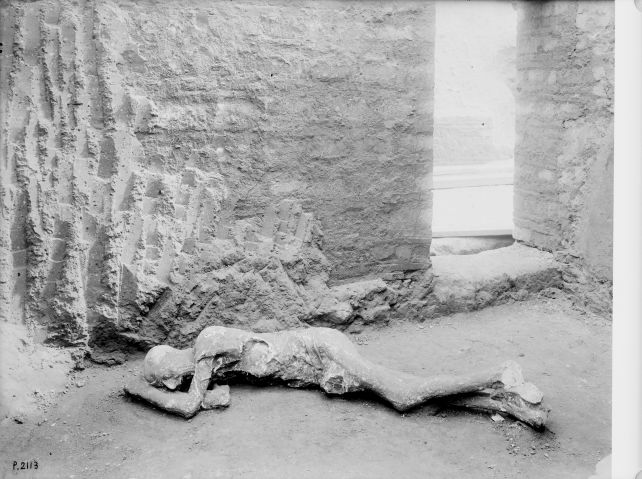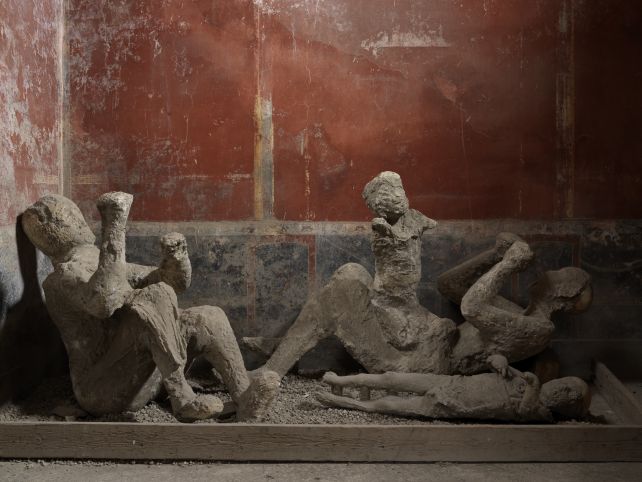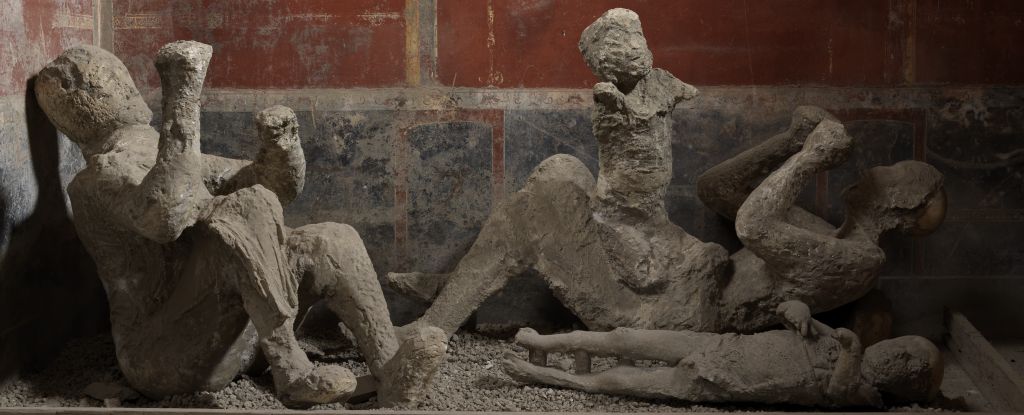Products You May Like
The devastation of Pompeii by the eruption of Vesuvius in 79 CE is one of the best-recorded disasters in human history. The ash and pumice that rained down preserved traces of the dying where they fell, leaving us to guess the identities and relationships of the people left frozen in time.
But we humans are imperfect. We navigate the world with perceptions and biases that cloud our observations, no matter how we try to remain objective. A new analysis of DNA retrieved from the victims of Pompeii reveals our assumptions about them were wrong – a discovery that is giving us insight into the bustling life of Pompeii, before a volcano snuffed it out.
“The scientific data we provide do not always align with common assumptions,” says geneticist David Reich of Harvard University.
“For instance, one notable example is the discovery that an adult wearing a golden bracelet and holding a child, traditionally interpreted as a mother and child, were an unrelated adult male and child. Similarly, a pair of individuals thought to be sisters, or mother and daughter, were found to include at least one genetic male. These findings challenge traditional gender and familial assumptions.”
The volcanic material dumped on Pompeii when Vesuvius exploded acted as a sort of flash fossilization process. It fell on and around the dead and dying, then set in place. When the bodies succumbed to time and decay, they left hollow impressions behind ash.

The ruins were rediscovered in the 19th century; in the 1870s, plaster was poured into the hollows to create casts of the bodies that had created them. But the shapes of the bodies weren’t the only thing preserved. The bones left behind were also sealed into the plaster.
The archaeologists who made the casts in the 19th century couldn’t have foreseen the emergence of future technology; nevertheless, their work would prove invaluable more than 150 years later. That’s because the casts give us context for details preserved in the genetic makeup of the victims, which in turn helps us understand life in Pompeii and Roman-era Italy.
The analysis, led by forensic archaeologist Elena Pilli of the University of Florence in Italy, was conducted on fragmentary skeletal remains from 14 plaster casts, selected from 86 casts that are currently undergoing restoration. This is no easy task, anthropologist Alissa Mittnik of Harvard University and the Max Planck Institute for Evolutionary Anthropology in Germany told ScienceAlert.

“Both the extreme heat during the volcanic eruption and the plaster casting process could be detrimental for long-term DNA preservation. In genetic analyses, we usually try to target skeletal elements that are known to preserve DNA exceptionally well, such as the inner ear portion of the skull or teeth,” she explained.
“In this study, we had to be less selective, as we were only able to take samples from the parts of the skeletons that were exposed in damaged casts that were undergoing restoration. The difficulty of obtaining ancient DNA under these circumstances is evident in the fact that only six of 14 sampled individuals provided us with genetic data.”
But those six individuals were sufficient to provide a significant challenge to what we thought we knew about the victims of Pompeii.
The casts are excellent, but not perfect, and details can be a little hard to gauge, just by eye, so archaeologists relied on other clues. The ostentatious golden bracelet worn by the person embracing a child was thought to be women’s jewelry. The tender affection with which each pair embraced was interpreted as feminine. Both of these assumptions, it turns out, were incorrect.

At the House of the Golden Bracelet, four individuals interpreted as parents and their two children were not genetically related to each other. At least one individual in the embracing pair was a man – and likely the other was, too.
The findings hint at a much deeper, more complex society than we had imagined for Pompeii.
“I had encountered the conventional narratives surrounding some of these groups of victims before studying them scientifically and they seemed plausible to me, therefore I was quite surprised to see that the genetic results uncovered that there is more to these people’s stories than ‘what meets the eye’,” Mittnik told ScienceAlert.
“The findings make us reconsider simplistic interpretations of gender and family dynamics in Roman society that might not reflect modern western intuitions.”
The analyses also revealed a greater genetic diversity in Pompeii than was suspected. The individuals studied were mainly descended from relatively recent immigrants from the eastern Mediterranean and Near East, rather than the people who had lived in the local region for centuries.
This is similar to diversity seen more broadly across the Roman region of western Italy, reflecting early forays into globalization, facilitated by strengthening trade across the Roman Empire.
And this is just six individuals in a city of thousands. It’s a staggering result. Not only does it give us a new glimpse into the lives of people who lived thousands of years ago, it’s a sobering reminder to try and check our biases at the door if we want to conduct an accurate study of human history.
“While our findings allow us to challenge some of the traditional narratives, we must be careful not to repeat the same mistake,” Mittnik told ScienceAlert. “Instead, our results emphasize the importance of integrating various lines of evidence and of not superimposing modern assumptions onto ancient contexts.”
The research has been published in Current Biology.
